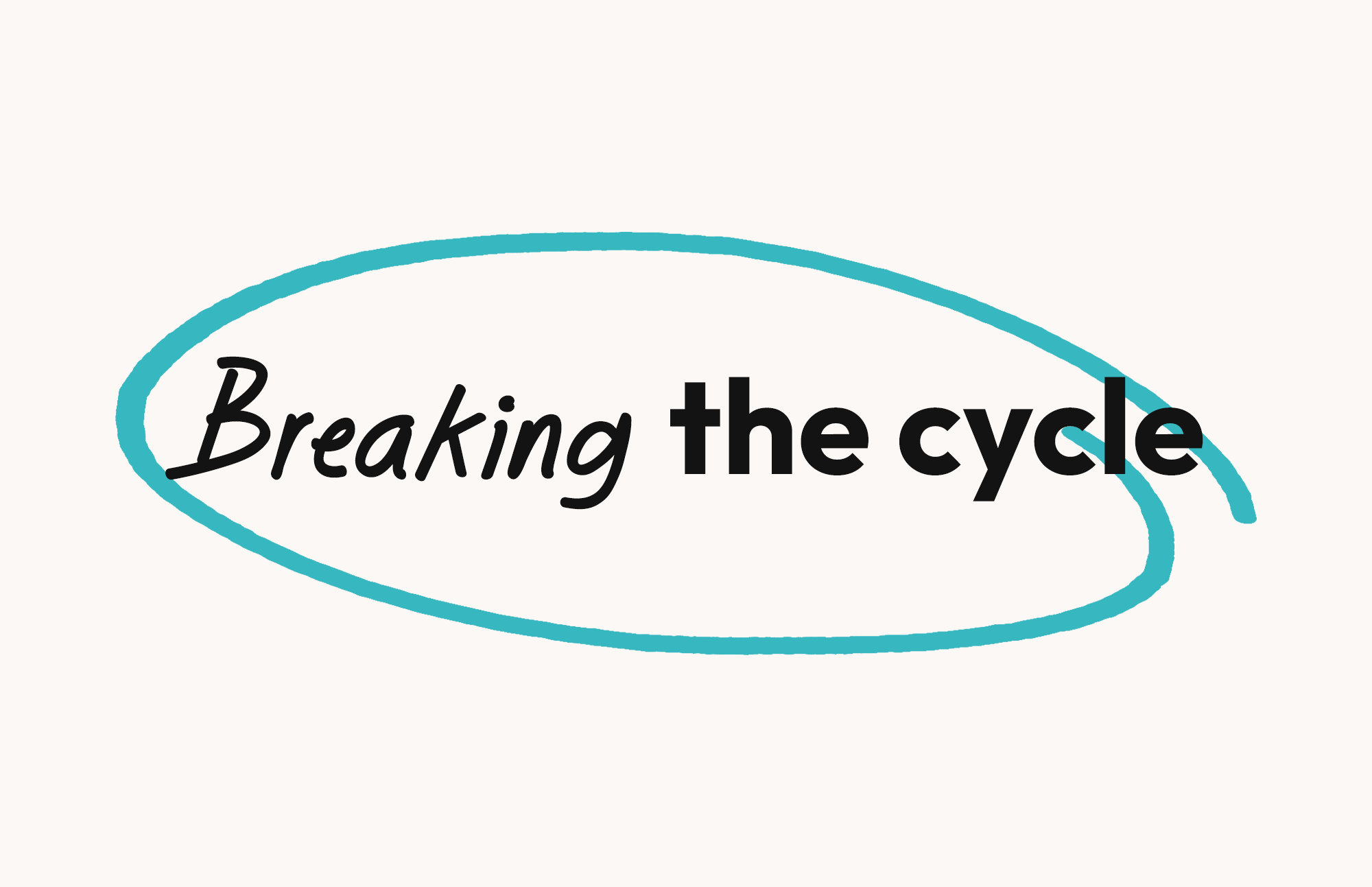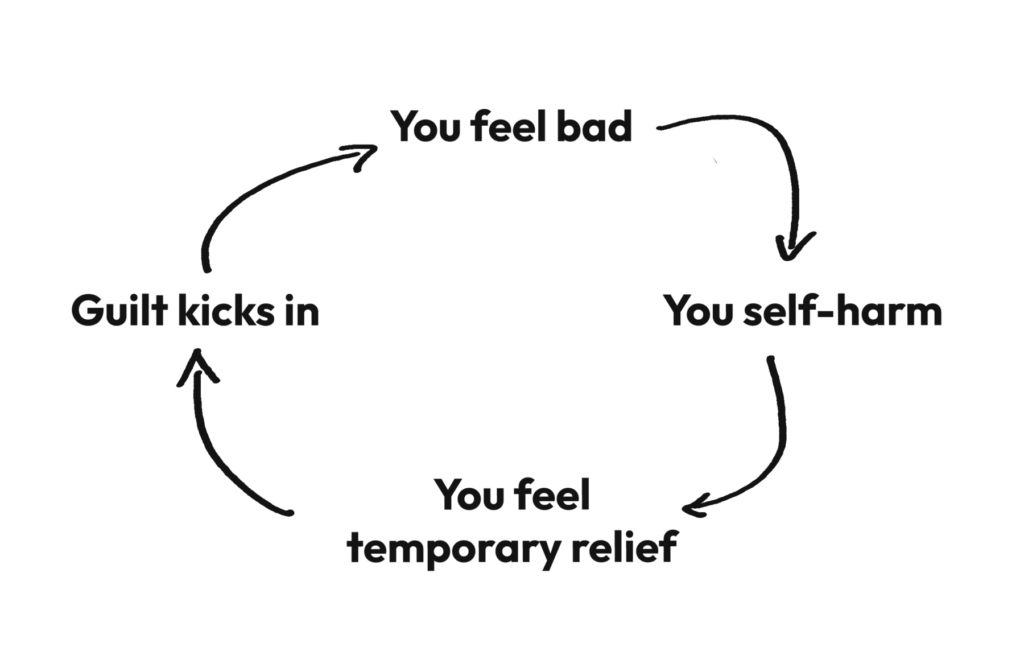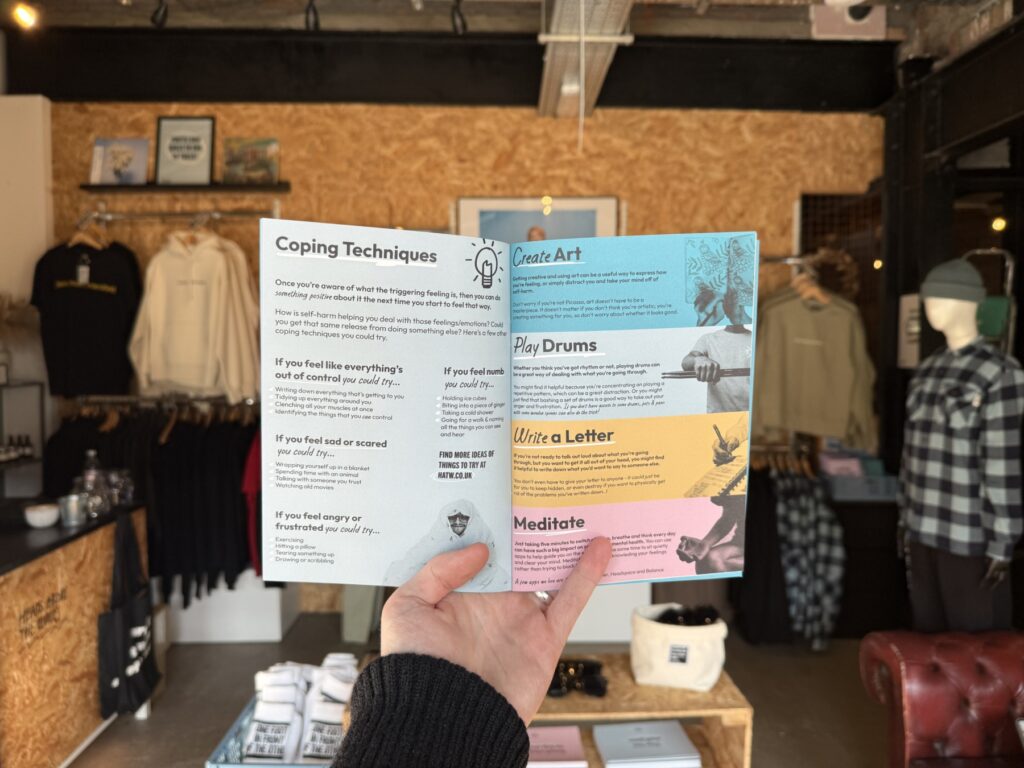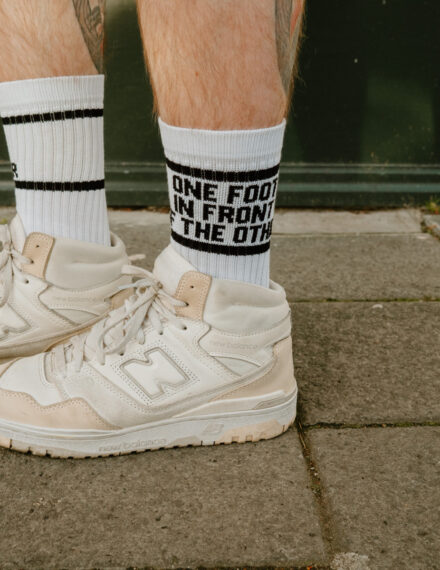Breaking the Cycle – Understanding Why Self-Harm Feels Like the Only Option
post by Si Martin

If you’re reading this, chances are you’re trying to figure out self-harm. Whether it’s something you’re dealing with yourself, or something a friend or loved one is going through. Maybe you’ve noticed that it’s become a pattern, or that stopping feels impossible. The truth is: self-harm doesn’t happen for no reason. It serves *some* sort of purpose. That could be like a release, or a form of control, or some way of expressing yourself. It can, of course, be for heaps more reasons. But over time, it can start to feel like the only way to deal with overwhelming emotions.
But it’s not the only way. And while breaking the cycle takes time, it is possible. Heads Above The Waves literally exists because of that! So today I wanted to explore why self-harm can feel so hard to stop, and how to take the first steps toward something different.
Why Does Self-Harm Become a Pattern?
Self-harm doesn’t just come out of nowhere. It usually develops as a response to overwhelming emotions or situations. Here’s how the cycle tends to work:
- You feel bad – Maybe it’s stress, sadness, anger, or numbness. Whatever it is, it feels too much to handle.
- You turn to self-harm – It might feel like the only way to release tension, express what you can’t say, or just feel something when everything feels numb.
- You feel temporary relief – For a short moment, it seems like it’s working. The emotions feel less intense, or you feel more in control.
- Guilt, shame, or regret kicks in – The relief doesn’t last, and now there’s another layer of difficult emotions added on top.
- The emotions build up & you feel bad again – And the cycle starts over.

The thing is, self-harm might feel like it helps in the moment, but long-term, it keeps feeding the same distress that started it in the first place. And when self-harm becomes the way that you deal with feeling bad, it just keeps the cycle going.
So How Do You Break the Cycle?
It’s not easy, but it is possible. The key is finding ways to interrupt the cycle and replace self-harm with something that helps in a healthier, more sustainable way.
1. Figure Out What Self-Harm Is Doing for You
Self-harm is often a way to cope, but the reason behind it is different for everyone. A few questions you can ask yourself to help figure out what self-harm is doing for you:
- Is it a release for anger or frustration?
- Does it help you feel something when you’re numb?
- Is it a way to express emotional pain physically?
- Does it give you a sense of control when everything else feels chaotic?
Once you start identifying what self-harm is doing for you, you can begin finding new ways to meet those needs—ones that don’t come with the same harm or guilt afterward.
Alternative Coping Strategies:
- If you need a physical release → Try exercise, punching a pillow, ripping up paper, or squeezing a stress ball.
- If you feel numb → Try holding ice cubes, biting a piece of ginger, or taking a cold shower.
- If you need expression → Try drawing, writing, or using music to put your emotions into something tangible.

2. Build a Support System (Even If It’s Small)
You don’t have to go through this alone. Finding even one person to talk to—whether it’s a friend, family member, teacher, or online support group—can make a difference.
If talking feels impossible, start small. Send a text, write it down, or even share a meme that hints at how you’re feeling. It’s about finding the type of communication that works for you. Just opening the door to communication can help lighten the load.
The first time you talk about self-harm it feels like a MASSIVE deal (and it is!), but over time, you’ll talk about it more and more, and it becomes easier and easier to talk about. Like, for me, self-harm was my deepest secret, and yet now I literally talk about it every day with HATW. There’s a video below with a very baby Si from the early days of HATW, talking about it:
🛟 Need someone to talk to? Check out a list of helplines by hitting the button below.
3. Make a Plan for When Urges Hit
Let’s be honest now: the urge to self-harm won’t just disappear overnight. Having a plan in place can help you ride out the moment without acting on it.
We’ve got a full Self-Harm Safety Plan resource which you can get at by hitting the button below. Print it out & fill it in with the warning signs, coping strategies, places you can talk etc, that are gonna be right for you. No-one else needs to see this plan, it can be just for you. Or if you’ve got that support network on your team, it might be helpful to share it with them.
If you want to keep it super simple, Try this:
- Delay: Set a timer for 5 minutes. Then 10. Then 20. You might find the urge passes if you can wait it out.
- Distract: Do something—anything—to shift your focus. Watch a funny video, doodle, go for a walk, play a game.
- Decide: If the urge is still strong, ask yourself: What do I need right now? Maybe it’s rest, maybe it’s a hug, maybe it’s just letting yourself cry. It might be helpful to think of “HALT” – are you:
Hungry?
Angry?
Lonely?
Tired?
We explored HALT in one of Si’s Mental Health Tips From Tour!
So… How Do You Stop Self-Harming?
The truth is, stopping isn’t just about willpower. It’s about catching yourself before you self-harm, learning new ways to cope and practicing them until they become your go-to coping mechanism. That takes time. And that’s okay.
Here’s a quick summary of what I’d do:
- Download the self-harm safety plan
- Keep a journal of every time you feel the urge to self-harm, so you can start to look for patterns.
- Try a bunch of coping strategies, to figure out which one feels right.
- Talk about it with someone you trust.
And remember that you’re not alone. You’re not broken. You’re not a problem. This is absolutely something you can get through.
If You Found This Helpful:
Please help us continue to provide free resources for people who struggle with self-harm by picking up some of our merch with a message! It helps fund our work, starts crucial conversations about mental health, and can help you manage your mental health too.
Enjoy this post? Feel free to share
More posi-content
Have you found a creative way of overcoming self-harm and keeping your head above the waves? Share your experiences to inspire others!
find out more



0 comment/s